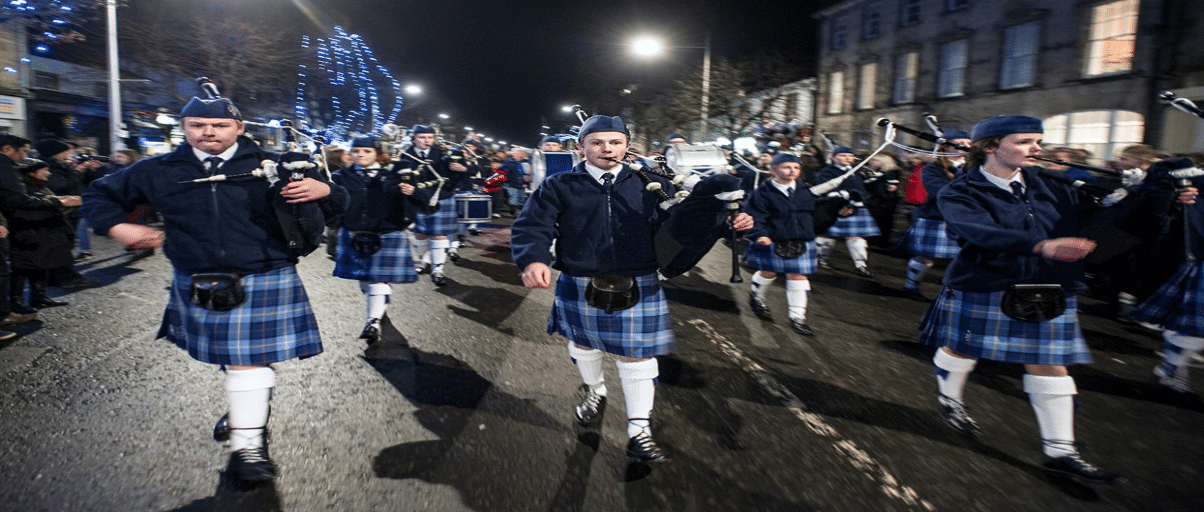St. Andrew’s Day is a national holiday in Scotland, celebrated on November 30th each year. It commemorates Saint Andrew, the patron saint of Scotland.
Tradition holds that St. Andrew was crucified on an X-shaped cross, now known as the Saltire, featured on the national flag of Scotland.
History of St. Andrew's Day
There are several theories about how St. Andrew became the patron saint of Scotland. A Greek monk named Rule is said to have brought the relics of St.
Andrew to Scotland in the 4th century, landing at a place now called St. Andrews. He built a church there to house the relics.
Another theory attributes St. Andrew's popularity in Scotland to the 9th-century Battle of Brunanburh, where King Athelstan of England gave Constantine II of Scotland a banner with St. Andrew's image, helping unite the Scots under one flag.
According to Scottish legend, St. Regulus brought St. Andrew's relics to Scotland in the 4th century, associating the saint with the country.
The connection between St. Andrew and Scotland was further solidified in the 9th century when King Angus saw a Saltire in the sky before a battle against the English. Inspired by this celestial sign, the Scots emerged victorious, and St. Andrew became the official patron saint of Scotland.Celebrations:
- National Holiday: St. Andrew's Day is a national holiday in Scotland, although it is not as widely observed as some other saints' days.
- Religious Observances: Many churches hold special services to commemorate St. Andrew, with prayers, hymns, and reflections on the saint's life.
- Traditional Scottish Food: People celebrate by indulging in traditional Scottish dishes, including haggis, neeps (turnips), and tatties (potatoes). Scottish restaurants often feature special menus for the occasion.
- Cultural Events: Various cultural events and festivals take place across Scotland, showcasing traditional music, dance, and art. It is an opportunity for people to celebrate their Scottish heritage and identity.
- Street Parades: Some towns and cities host parades featuring bagpipers, traditional Scottish attire, and the Saltire flag. These processions contribute to the festive atmosphere.
- Charity Events: The day is also associated with charitable activities, with some people using the occasion to raise funds for local causes or volunteer in their communities.
Significance:
- Cultural Identity: This day is an occasion for Scots to celebrate their cultural identity, heritage, and contributions to the world.
- National Pride: The Saltire, Scotland's national flag, is prominently displayed during celebrations, reflecting a sense of national pride.
- Unity: The day serves as a reminder of Scotland's historical struggles and victories, fostering a sense of unity among its people.
St. Andrew's Day Celebrations
Scotland celebrates this holiday with a variety of events and traditions. These include:
- Ceilidh dancing: Ceilidh dancing is a traditional Scottish folk dance. People of all ages can participate in ceilidhs, and they are a great way to celebrate this day.
- Haggis suppers: Scots enjoy a traditional dish made from sheep's heart, liver, and lungs, mixed with oatmeal and spices. This supper holds on this day.
- Pipe bands: Pipe bands are a popular form of entertainment in Scotland, and they often perform at St. Andrew's Day events.
- Flag Raising: Cities and towns across Scotland hold flag-raising ceremonies on this day.
Why Scotland Celebrate St. Andrew's Day?
Scotland celebrates this holiday for various reasons. It is a day to celebrate Scottish identity and culture. It is also a day to commemorate the country's patron saint. This day brings family and friends to Scottish traditions in food, music, and dance, fostering a sense of togetherness. It's a special day for Scots globally, celebrating heritage on this day with pride and joy in Scotland's honour.



















